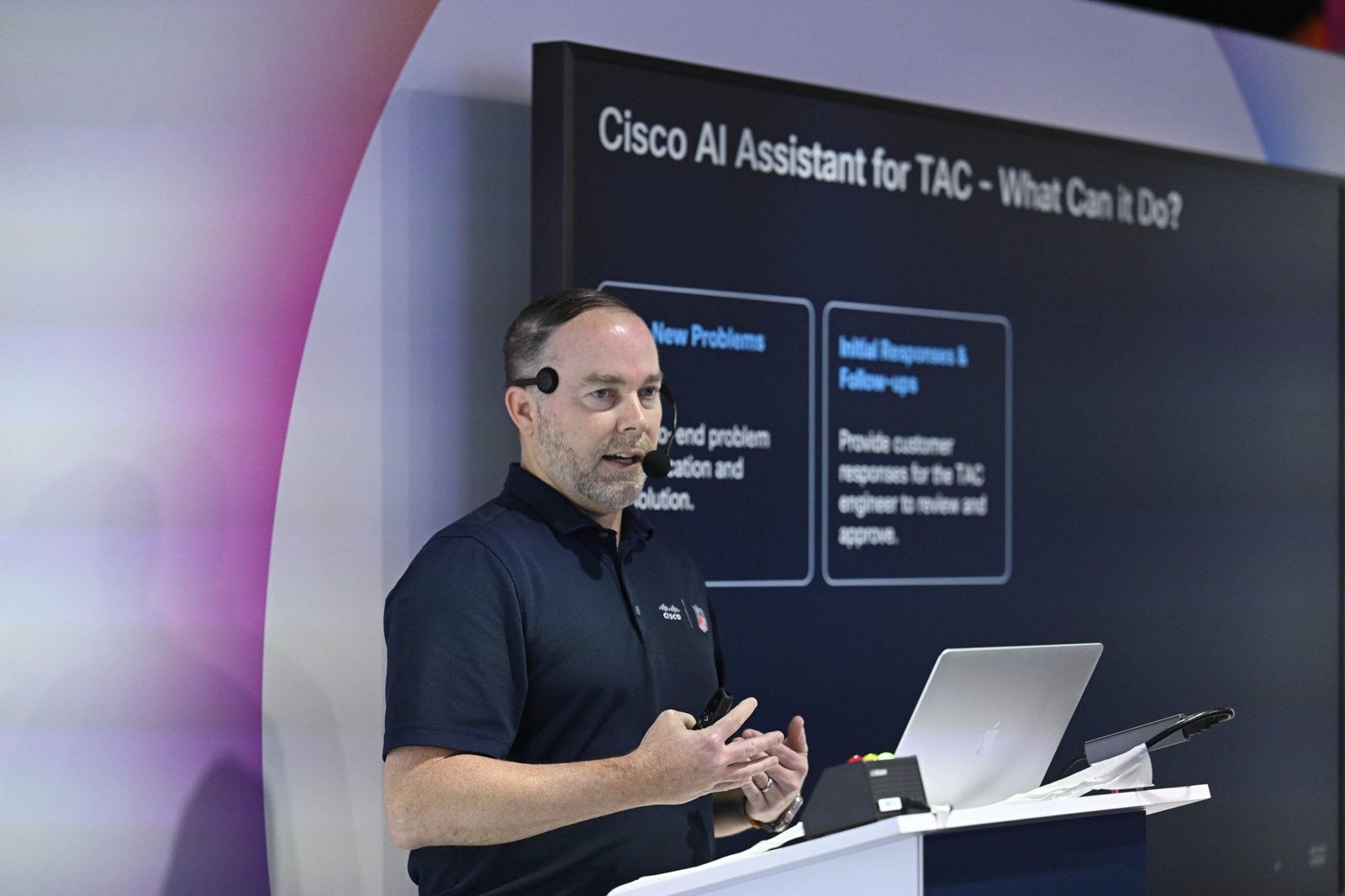Now that the AI agentic era is here, I wonder: “How did we get here? What were those at the forefront of AI innovation thinking back in the day? And, perhaps more importantly, how do they see the future”?
To answer these questions, I met with David White, one of Cisco’s Distinguished Engineers and the man behind some innovations in the Cisco AI Assistant for Support.
A techno-optimist Florida man
David has a kind, gentle presence and a curious nature. Upon meeting him, two things become immediately clear: He is intelligent, yet humble, and a techno-optimist. He joined Cisco in 2000 when, as he puts it, tech companies were the talk of the town, and everything was exciting. In his 25 years at the company, he has inadvertently become an agent of innovation, with nearly 100 patents in his name. “It’s just how I am wired”, he tells me, “I am always looking for problems. Because once you can clearly identify a problem, you have an opportunity to invent a solution for it. And, as you know – we experience a lot of problems in the tech industry. Ideally, I look to eliminate the problem. How do we prevent it? How do we ensure customers do not experience it? But if we can’t fully eliminate it, then we think about how to reduce the time to detection and resolution”.
Cisco is a company that prioritizes innovation. If you can find a better way to do something, or build something new, you are empowered to do it. And so, David started working on what became Cisco first humanoid, back in 2019.
The origin story of AI Agents & humanoids
Today, AI agents are all the rage. However, things were a lot different in the late 2010s when David and his team were trying to solve a problem. One might wonder, how on earth did they come up with the idea of what we then called a ‘humanoid’?
Back then, David and his team set out to build a solution that could accelerate issue resolution times by augmenting an engineer’s ability to detect and solve customer problems. An important piece of that puzzle was communication.
Bots were the industry default, but David felt that the customer’s experience was undermined by the effort to figure out an effective way to talk to them. “We didn’t want communication to be a barrier, we wanted to maintain the golden standard of experience customers expect of Cisco TAC. Customers should focus on describing their issue, and we were going to have to figure out what the customer was communicating and respond accurately”.
That need for communication in natural language was the birth of the ‘humanoid’. As customers might articulate problems differently – and have different paths to resolution – David and his team needed to understand and map them before training the models with that information.
Last but no means least, they needed to ensure accuracy. “TAC is known for helping customers with accuracy and technical depth. We wanted it to be 100% accurate.” To do that, they introduced the concept of the ‘overwatcher’.
Cisco’s unique ‘human in the loop’ concept
To solve the problem of maintaining Cisco TAC’s pristine standards, David and his team introduced what is now known in the industry as ‘human in the loop’. For David, the goal was that the assistant would be 100% accurate. To achieve this, they did two things differently. Firstly, the assistant wasn’t built to be omniscient. In other words, it was trained on what they called “campaigns” on specific issues, the solutions to which were known. The intention was, it couldn’t hallucinate an insane answer, far outside the realm of correctness. In the beginning, its accuracy was low, but rapidly increased as human overwatchers would correct the errors, optimizing for efficiency while keeping satisfaction scores high. The results were impressive. “Previously, the human engineer might take four or five cases a day. By performing overwatch, they’re able to handle a hundred-plus.”
Today, the Cisco AI Assistant for Support is making our TAC engineers super-human. Watch David’s Cisco Live session for more details.
Vibe coding & HR for AI Agents
As these models get better and better, it’s natural to ask questions about the future shape of David’s field. While some go as far as hiring vibe coders, David highlights the value of AI-enhanced expertise: “Having an AI assistant that’s helping you 10x your performance is great! But if you don’t have the knowledge to really understand what it did, how it did it, what their risks are, did it make a mistake or not? Then, that’s on you!”
Agentic AI will bring changes to the future of work, but, as David puts it, those might be different to what most of us think: “When you have many AI agents, you might need a dedicated HR department to measure the quality, potentially retrain them, or even put them on performance improvement plans”.
Our Artificial General Intelligence (AGI) potential
David is one of those people who is not only able to imagine the future but also dares to design it. To wrap up our conversation, I ask him, does a techno-optimist believe in AGI?
“Right now, there is no clear-cut standard metric we can use to test whether we have achieved AGI. There are so many dimensions you can test for. Artificial General Intelligence, we expect that it will be as good as – or better than any human. But at what? At everything? Which human? Maybe from a knowledge perspective, raw knowledge, to beat you at any test. But there’s more to you, there’s more to a human than pure knowledge and experience”.
[1] David currently holds 98 worldwide patents; 83 US issued patents with 29 more pending










